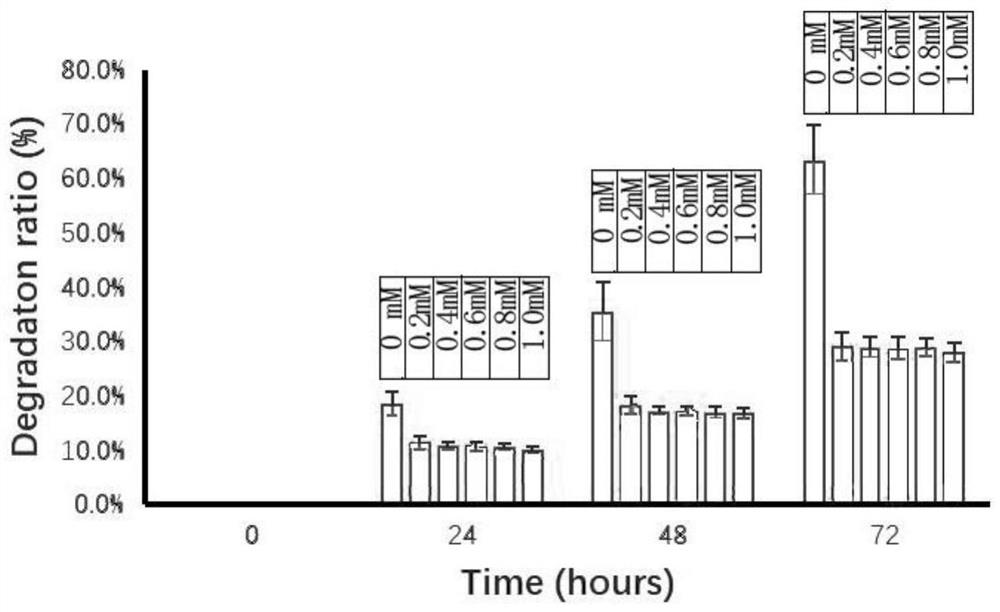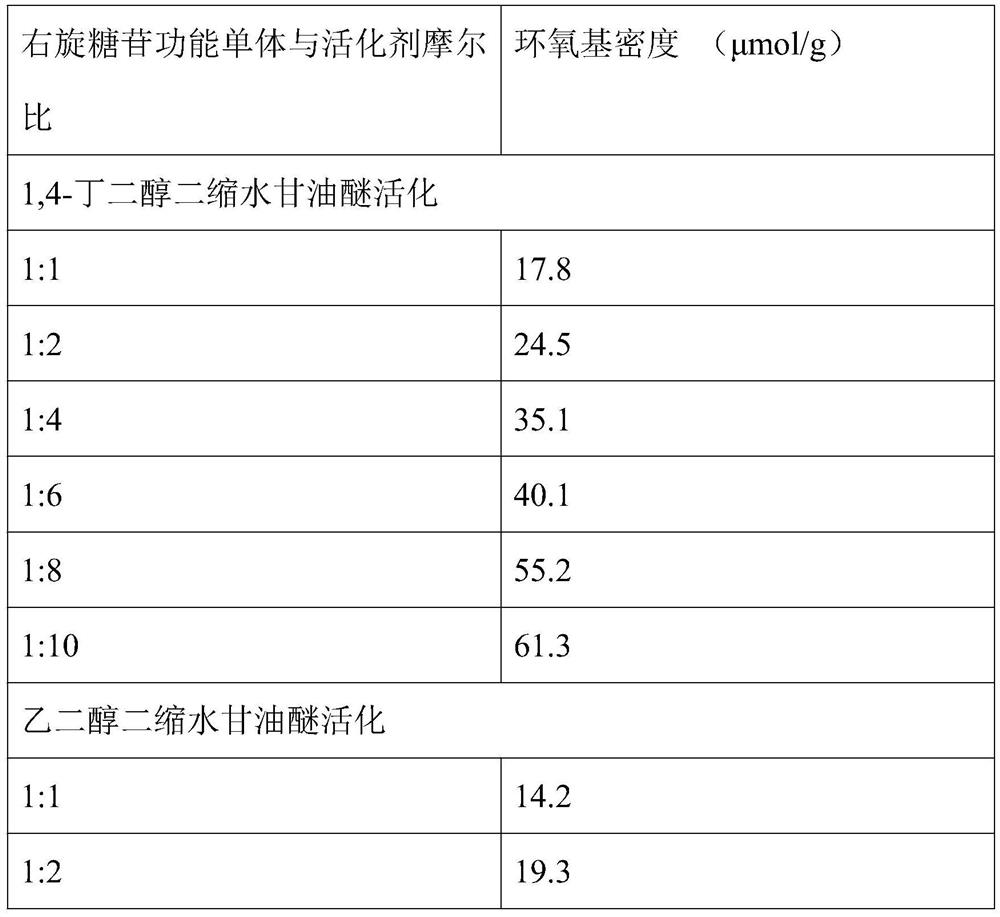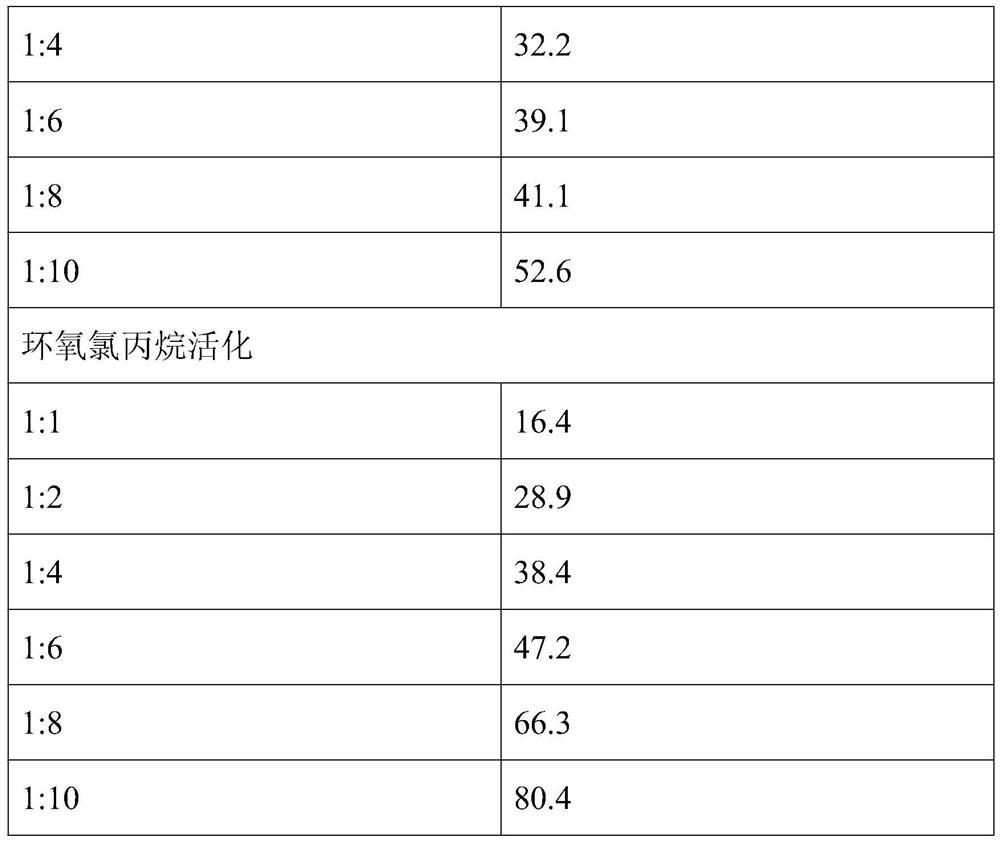Method for preparing cross-linked dextran gels resistant to alpha-glucosidase hydrolysis
A technology of dextran gel and glucosidase, applied in the field of materials, can solve problems such as adverse reactions, and achieve the effects of reducing catalytic efficiency, enhancing maintenance time and plastic effects, and large economic benefits
- Summary
- Abstract
- Description
- Claims
- Application Information
AI Technical Summary
Problems solved by technology
Method used
Image
Examples
Embodiment 1
[0026] Low molecular weight dextran at an activation concentration of 20% (w / v) becomes a biocrosslinking intermediate:
[0027] Take 20% (w / v) low molecular weight dextran (10000-20000Da) solution in a 15mL centrifuge tube, according to the molar ratio of low molecular weight dextran functional monomer and epoxy group-containing activator to 1:1 , 1:2, 1:4, 1:6; 1:8; 1:10, add 1,4-butanediol diglycidyl ether (BDDE), ethylene glycol diglycidyl ether (EGDE), Oxychloropropane or the like is used as an activator for the activation reaction. The reaction system contains 0.3M NaOH as a catalyst, and reacts at 30°C for 4 hours to obtain a mild and effective biological cross-linking intermediate, that is, epoxy-activated low-molecular-weight dextran. It was precipitated with 75% ethanol and washed 3 times and lyophilized to powder. After dissolving it in pure water, the density of epoxy groups contained in the biocrosslinked intermediate was measured by a sodium thiosulfate titrati...
Embodiment 2
[0034] Activation of low molecular weight dextran at different concentrations into biocrosslinking intermediates:
[0035] Take low molecular weight dextran (10000-20000Da) solutions with concentrations of 5%, 10%, 15%, 20%, 25% and 30% (w / v) respectively in a 15mL centrifuge tube. The molar ratio of glycoside functional monomer and activator is 1:4, and 1,4-butanediol diglycidyl ether (BDDE), ethylene glycol diglycidyl ether (EGDE), epichlorohydrin, etc. are added as activators respectively. Activation reaction is carried out. The reaction system contains 0.3M NaOH as a catalyst, and the reaction is carried out at 30° C. for 4 hours to obtain a biologically cross-linked intermediate containing an epoxy group. The cells were precipitated with 75% ethanol and washed 3 times before lyophilization to powder. After dissolving in pure water, the density of epoxy groups contained in the biocrosslinked intermediate was measured by sodium thiosulfate titration. When the concentrati...
Embodiment 3
[0039] Example 3 The influence of the molar ratio of the epoxy group contained in the biological cross-linking intermediate to the high-molecular-weight dextran functional monomer on the dextrorotatory content in the gel after cross-linking:
[0040]Take 30% (w / v) high molecular weight dextran (700000-1000000Da) solution in a 15mL centrifuge tube, according to the molar ratio of the epoxy group contained in the biological cross-linking intermediate to the high molecular weight dextran functional monomer For the ratio of 1:10, 1:20, 1:30, 1:40, 1:15, 1:60, 1:80 and 1:100, add 1,4-butanediol diglycidyl ether ( BDDE), ethylene glycol diglycidyl ether (EGDE), and epichlorohydrin as activators. The reaction system contained 0.2M NaOH as a catalyst, and the reaction was carried out at 30°C for 4 hours. Prepared into gel particles. The particles were completely vacuum lyophilized and the content of dextran per gram of gel was calculated. When the molar ratio of the epoxy group con...
PUM
 Login to View More
Login to View More Abstract
Description
Claims
Application Information
 Login to View More
Login to View More - R&D
- Intellectual Property
- Life Sciences
- Materials
- Tech Scout
- Unparalleled Data Quality
- Higher Quality Content
- 60% Fewer Hallucinations
Browse by: Latest US Patents, China's latest patents, Technical Efficacy Thesaurus, Application Domain, Technology Topic, Popular Technical Reports.
© 2025 PatSnap. All rights reserved.Legal|Privacy policy|Modern Slavery Act Transparency Statement|Sitemap|About US| Contact US: help@patsnap.com



